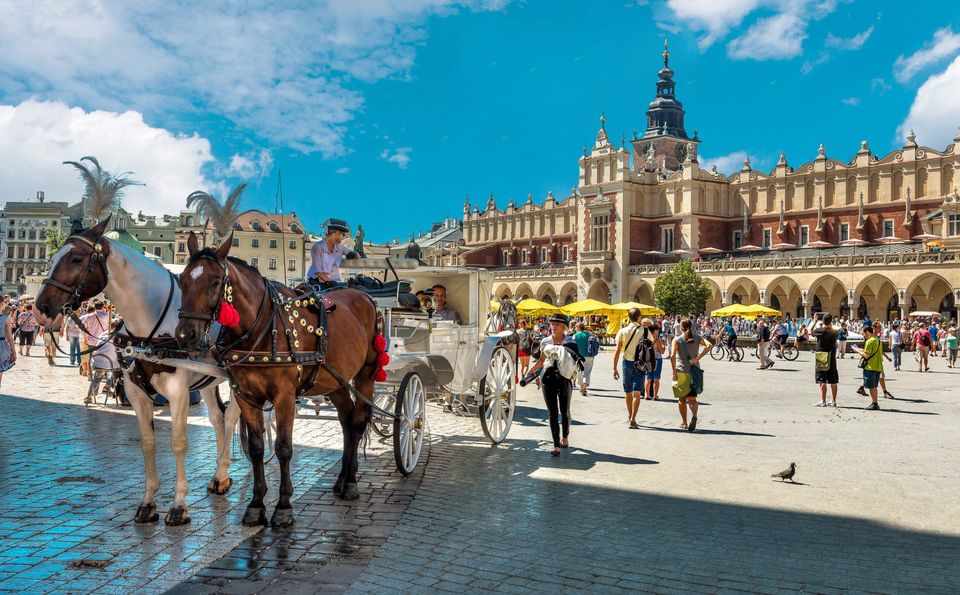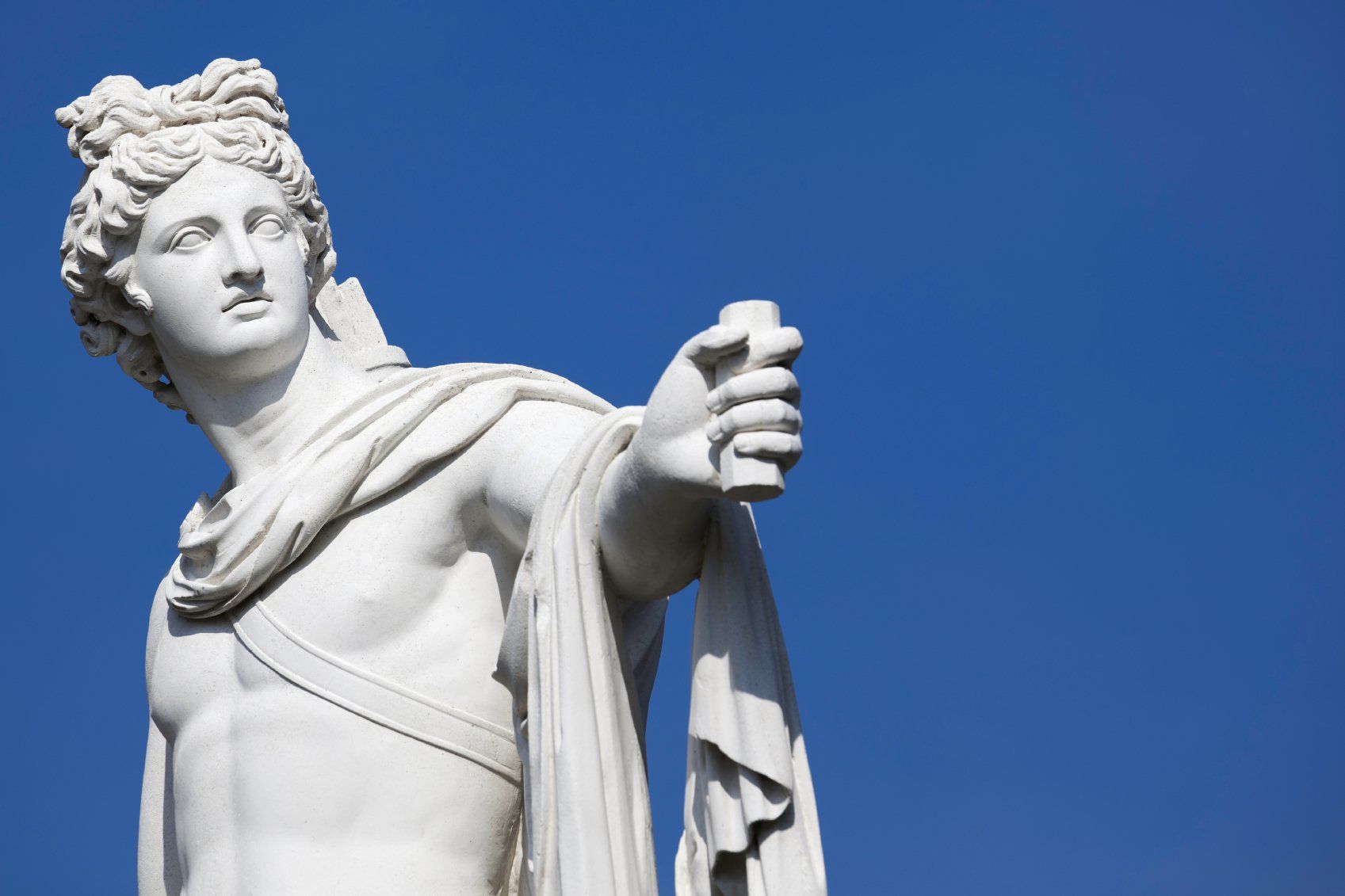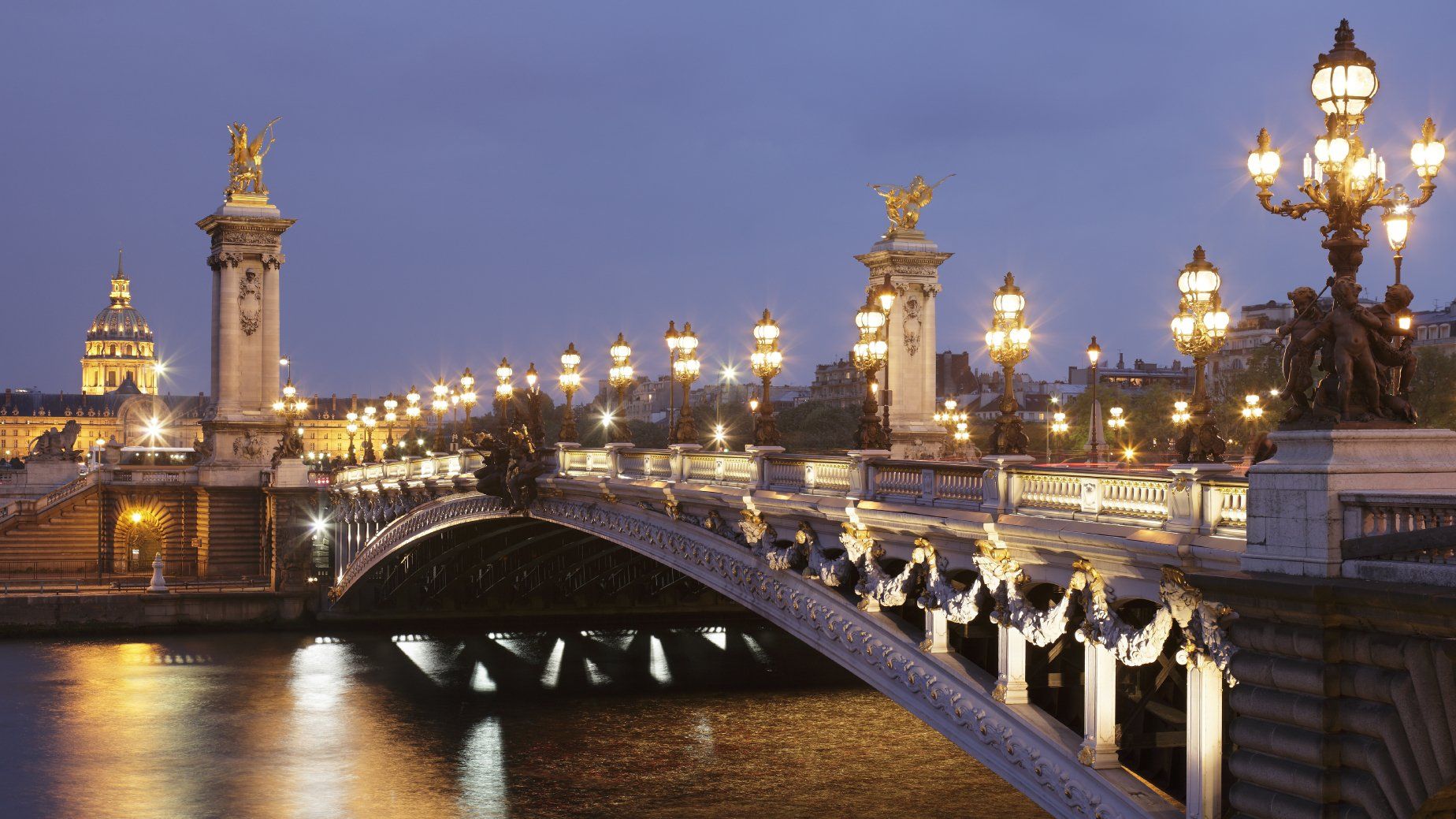Step Into A Fairy-Tale In Krakow
Thilo Haertel • 9 December 2019
From the Old Town to the Kazimierz District

Old Town
All visitors to Krakow sooner or later end up on the Main Market Square too. Peak into St. Mary’s Basilica – it houses one of the most famous Medieval masterpieces, the wooden altar by Veit Stoss. The Main Market Square is one of the must-see places to visit in Krakow, especially since St. Mary's Church is just one of the many attractions you will find there. It is also worth visiting the underground multimedia exhibition. It teaches the history of Krakow and is located next to the Krakow Cloth Hall. The Krakow Cloth Hall (Sukiennice) is without a doubt worth a visit, especially if you want to buy original Polish handicrafts as a souvenir. What's more, one of the things to do in Krakow at night is to stroll around the Main Market Square!
Wawel - Royal Palace
Wawel Hill was the centre of power: originally ducal, later ecclesiastical (bishop’s)and royal. Yetthe first traces of human presence on Wawel Hill are several tens of thousands years old: the cracked limestone rock overlooking the river provided perfect shelter. Legend speaks of a dragon nestling at its foot, which was only conquered with the ingenuity of a shoemaker’s apprentice (although other versions of the legend believe him to be a prince’s son). That tale is commemorated in the monument of the dragon standing at the entrance to the Dragon’s Den between Wawel Hill and the Vistula River. As the sculpture is connected to the gas mains, the beast breathes real fire.
Kazimierz
Besides the city centre, the Kazimierz district likewise intrigues owing to many centuries of coexistence of two cultures: Christian and Jewish. Brimming with gems of Judaica of international significance, it is a place teeming with life: home to flea and art markets, and atmospheric taverns, pubs, restaurants, and cafés with live music. The Father Laetus Bernatek Footbridge connects Kazimierz to Podgórze – a district forgotten for years that has become fashionable, yet remaining peaceful and atmospheric. Nowa Huta, the most attractive and comprehensive implementation of the dreams of socialist realist architects, still surprises with the striking symmetry of its monumental structures.
Schindler list
The former Oskar Schindler’s Enamel Factory nowadays houses a permanent exhibition entitled Kraków under Nazi Occupation 1939-1945, which is one of the most interesting and important exhibitions to visit when in Krakow. It showcases both individual and collective dimensions of the monstrosities the war has brought upon Polish citizens.
A true must-see for everyone even slightly interested in history.
It tells the gripping history of Krakow during the World War II – the inhabitants who were fed Nazi propaganda, the Jews who were forced to live in a ghetto and the victims of the war terror. The creators managed to perfectly capture many levels of difficulties that people had to deal with at that horrifying time.
The museum is built in a unique way: each room is meticulously arranged to resemble a very specific place – a street, a hairdresser’s salon, a labor camp, a railway station and many, many more (there is 45 of them in total). It is a very interesting mean to keep the visitors on their toes for the entire duration of the tour and makes everything much more interesting. It is a museum that just does not get boring! It is like a history lesson that you can simply walk into.
Schindler ran an enamelware factory in Krakow which employed over 1000 Jews. When the German authorities started clearing the ghettos, he argued that he needed his employees to keep working at the factory. So he was allowed to relocate his Jewish staff to a new factory in Bohemia, saving 1200 of them from death in the gas chambers.
He spent his whole fortune on bribes and the black market to keep them alive, and his story was made into the film Schindler’s List (some of which was shot nearby). His old factory has now been turned into a museum. It’s more about the history of Krakow under occupation – which is fascinating in its own right – but there’s a section about Schindler too and the people he saved.
All visitors to Krakow sooner or later end up on the Main Market Square too. Peak into St. Mary’s Basilica – it houses one of the most famous Medieval masterpieces, the wooden altar by Veit Stoss. The Main Market Square is one of the must-see places to visit in Krakow, especially since St. Mary's Church is just one of the many attractions you will find there. It is also worth visiting the underground multimedia exhibition. It teaches the history of Krakow and is located next to the Krakow Cloth Hall. The Krakow Cloth Hall (Sukiennice) is without a doubt worth a visit, especially if you want to buy original Polish handicrafts as a souvenir. What's more, one of the things to do in Krakow at night is to stroll around the Main Market Square!
Wawel - Royal Palace
Wawel Hill was the centre of power: originally ducal, later ecclesiastical (bishop’s)and royal. Yetthe first traces of human presence on Wawel Hill are several tens of thousands years old: the cracked limestone rock overlooking the river provided perfect shelter. Legend speaks of a dragon nestling at its foot, which was only conquered with the ingenuity of a shoemaker’s apprentice (although other versions of the legend believe him to be a prince’s son). That tale is commemorated in the monument of the dragon standing at the entrance to the Dragon’s Den between Wawel Hill and the Vistula River. As the sculpture is connected to the gas mains, the beast breathes real fire.
Kazimierz
Besides the city centre, the Kazimierz district likewise intrigues owing to many centuries of coexistence of two cultures: Christian and Jewish. Brimming with gems of Judaica of international significance, it is a place teeming with life: home to flea and art markets, and atmospheric taverns, pubs, restaurants, and cafés with live music. The Father Laetus Bernatek Footbridge connects Kazimierz to Podgórze – a district forgotten for years that has become fashionable, yet remaining peaceful and atmospheric. Nowa Huta, the most attractive and comprehensive implementation of the dreams of socialist realist architects, still surprises with the striking symmetry of its monumental structures.
Schindler list
The former Oskar Schindler’s Enamel Factory nowadays houses a permanent exhibition entitled Kraków under Nazi Occupation 1939-1945, which is one of the most interesting and important exhibitions to visit when in Krakow. It showcases both individual and collective dimensions of the monstrosities the war has brought upon Polish citizens.
A true must-see for everyone even slightly interested in history.
It tells the gripping history of Krakow during the World War II – the inhabitants who were fed Nazi propaganda, the Jews who were forced to live in a ghetto and the victims of the war terror. The creators managed to perfectly capture many levels of difficulties that people had to deal with at that horrifying time.
The museum is built in a unique way: each room is meticulously arranged to resemble a very specific place – a street, a hairdresser’s salon, a labor camp, a railway station and many, many more (there is 45 of them in total). It is a very interesting mean to keep the visitors on their toes for the entire duration of the tour and makes everything much more interesting. It is a museum that just does not get boring! It is like a history lesson that you can simply walk into.
Schindler ran an enamelware factory in Krakow which employed over 1000 Jews. When the German authorities started clearing the ghettos, he argued that he needed his employees to keep working at the factory. So he was allowed to relocate his Jewish staff to a new factory in Bohemia, saving 1200 of them from death in the gas chambers.
He spent his whole fortune on bribes and the black market to keep them alive, and his story was made into the film Schindler’s List (some of which was shot nearby). His old factory has now been turned into a museum. It’s more about the history of Krakow under occupation – which is fascinating in its own right – but there’s a section about Schindler too and the people he saved.

One of the locations of the series is the Rote Burg Police Headquarters, which was located exactly where the Alexa department store is located in the centre of Berlin today. During the Second World War, however, the building (at that time the Gestapo headquarters) was destroyed, so that the exterior of the police headquarters had to be replaced. The choice fell on the Red City Hall, which is not even 10 minutes walk away. The office scenes of the police headquarters were shot in the studio. The next location, the nightclub and nude club Moka Efti, was located at Friedrichstraße 60 and had a legendary seductive reputation. Today, however, there is nothing left of it in Friedrichstraße 60, because a building complex erected in the 90s is now located here. However, a good replacement was also found here, because the scenes in the Moka Efti were shot in the empty silent cinema Delphi in the district Weißensee. The Alexanderplatz should not be missing in a series about Berlin as a location, but it was a big challenge for the makers to resurrect the Alexanderplatz of the 20s. The whole place was closed for one day and used for the shooting. The makers sent countless extras in the look of the 1920s to Alex (as the Berliners like to call him), let dozens of the car models of that time drive through the streets and in the background even a pre-war tram drove through the picture. The restaurant Aschinger as part of the company Aschinger managed to become one of the biggest gastronomy chains in Europe. The restaurant was especially popular with low earners, because the good and cheap food could be eaten with any number of ribs (rolls). The Alexanderhaus and the Weltzeituhr are located where the Aschinger Restaurant used to be, which is why the Ratskeller of the Rathaus Schöneberg was used for filming. The Karstadt department store on Hermannplatz forms the backdrop for the workers' demonstrations in the "Blutmai" in 1929. At that time it was considered the most modern department store in Europe, but also fell victim to the Second World War. Years later it was rebuilt on the same site and so in this case the shooting location could also be the original location. The Varieté-Schuppen Plaza is not only in the series a popular place for a cosy evening with drinks: In the 20's it was mainly workers of the proletarian quarter Friedrichshain who visited the Plaza in the former Ostbahnhof. Today the publishing building of the New Germany is located there. A complete contrast to the Plaza is the Kakadu, which at the time was the largest bar in the capital. Here high finance and half-world spent the evenings between coke, opium swaths etc. with each other. Translated with www.DeepL.com/Translator (free version)


